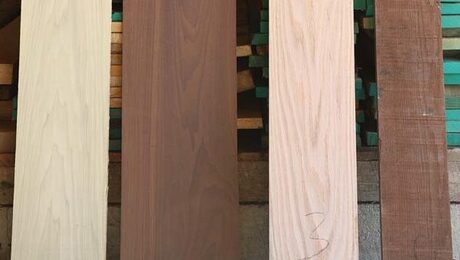STL328: Imperfect Precision – FineWoodworking
How do you create tapered bevels?
From Brad:
In STL322, while discussing bevels, you mentioned tapered bevels, something I had never thought of before. Can you explain how you go about creating these? Are there different methods, and if so, what method is your go-to when creating them?
How much precision should we be aiming for?
From Scott:
Hi Ben (and Mike and Vic),
Listening to STL262, I was reminded of a lesson I learned when I was squaring a new sliding compound miter saw. Even though it was not a Festool saw, I was using the Festool instructions, which recommended a version of the five-cut method. At the end, it was noted that the method is capable of detecting an error that is outside the intended tolerances of the tool.
This was a lightbulb moment for me. Castings flex. Bearings have play. It all adds up. When those variances are expressed in +/- terms, I can expect that if I measure the same thing over and over again I can expect to get a variety of results within that range, and those results will be random and super frustrating if I try to force them to go away.
With the quality of measuring tools we have available, the question may not be how accurate we need to be; it’s more like how accurate are we able to be? Are we aiming for a standard that is not only unnecessary but actually not possible?
Another scenario: I consider my 12-in. Starrett combo square to be the reference tool in my shop for most things. It has a stated accuracy of +/-.002 in. over the length of the blade. If my tool is +.002 and I use it to check a crosscut for square, when I see no light, my “perfect” cut is +.002 in. out of square. If I measure the angle at the other end of the cut, it’s -.004 in. That’s a lot of photons! And per Mike’s observation about putting English on the crosscut sled when cutting, a variance of .001 in. or .002 in. could be something like having your left foot forward instead of your right. And per Vic’s observation, if my tool is +.002 because I tightened the lock bolt with a bit of sawdust between the stock and the ruler, the next time I set the square it won’t be the same. But this sled was perfect last time I used it!
It was a big lesson to me to learn that my tools and the things I use to measure them both have accuracy limits. I still use precision tools like a dial indicator when I construct some jigs and fixtures, but I try to be realistic about what they can tell me. The maximum accuracy I can attain is not perfect, but it is sufficient. If I try to reach perfection, I have created a new hobby for myself. I don’t know exactly what to call it, but it probably has more in common with statistics than with woodworking.
What is the best way to be accurate with a tracksaw?
From Dave:
I’m going to be making some built-ins for my home later this year, and this is going to involve making a series of square and/or parallel cuts on sheet goods. I don’t have a table saw (due to a historical injury suffered by my father-in-law, my wife has forbidden it), but I have a tracksaw, and I’ll be using that to cut up the plywood.
I made a cabinet for my shop last year, and I made the carcass by cutting to a line drawn off of a square to cut it up. While this method got me close to square, I ended up clamping the pieces together and evening them up with a hand plane to get them all square. There must be a better way to get to square.
What is your recommended method for keeping the track square? But I have a couple other, related questions. When would you choose to use parallel guides versus a track square? Would a speed square or try square be adequate for a relatively small project like mine?
I’ve researched a couple of different options, including holding a speed square or try square to the noncut side of the track, or buying one of a variety of dedicated tracksaw squares or parallel guides; however, my research has been inconclusive.
I realize that you don’t know exactly how big my projects are, so, put another way, if you consider the “holding a square next to the track” method to be adequate for a small number of cuts, what would be your tipping point for getting one of the attachable squares or guides?
I am aware that this question was super long, so feel free to edit it as needed.
Every two weeks, a team of Fine Woodworking staffers answers questions from readers on Shop Talk Live, Fine Woodworking‘s biweekly podcast. Send your woodworking questions to [email protected] for consideration in the regular broadcast! Our continued existence relies upon listener support. So if you enjoy the show, be sure to leave us a five-star rating and maybe even a nice comment on our iTunes page. Join us on our Discord server here.
Sign up for eletters today and get the latest techniques and how-to from Fine Woodworking, plus special offers.











